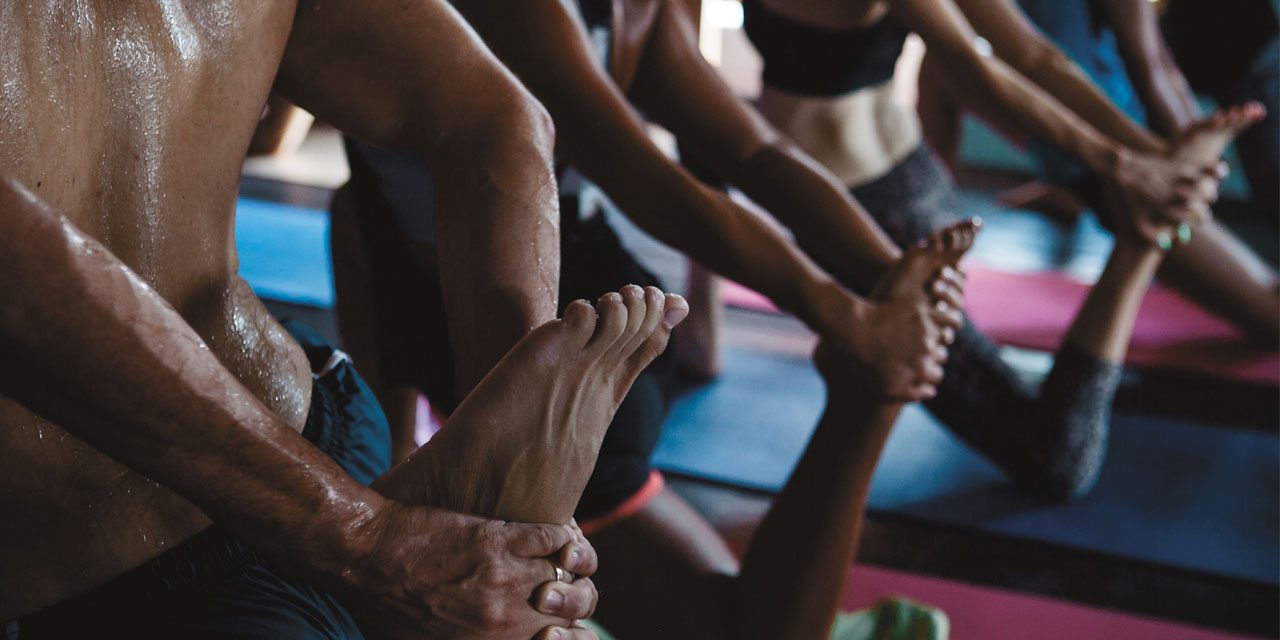
The HOT yoga diet
Nourishing your body for hot yoga. By Sarah Jackson
Hot yoga is a favourite among many yogis today. Not only does it have all the benefits of traditional yoga, but it also heats you from the inside out. Some people believe the idea of hot yoga was to replicate the heat and humidity of India, however, the main purpose for this kind of practice is very much down to the individual and their practice style.
Hot yoga is great for many reasons, but it results in the body getting very warm which can result in a lot of sweat. Some people claim that hot yoga will ‘sweat out toxins’, but it may not be as simple as that. Our body is a complex, intelligent system, with our organs such as the liver and kidneys getting rid of toxins for us. So, although there are many benefits to hot yoga such as improved muscle flexibility, increased blood flow to the arms and legs due to the physical nature of the exercise and, of course, stress relief (anyone who’s tried hot yoga knows it can make us feel calmer and, in some cases, brand new after an amazing class), the hot aspect cannot work miracles.
In most cases people perceive hot yoga as more demanding on the body so here are some tips on how to prepare for your sweaty, energising hot yoga class.
Hydration is key
When you become dehydrated, water and electrolytes imbalances can occur which may lead to the exercise performance being affected. Therefore, hydration pre-, during and post-exercise is crucial, whether it be hot yoga or any other yoga style. There are variables between individuals when it comes to sweating rates, meaning customised fluid replacement programmes can be recommended. Here, we will discuss general guidance only. The American College School of Medicine (ACSM) provides evidence-based position stands, providing guidance on the appropriate hydration for individuals performing physical activity. For example, pre-exercise, the ACSM recommends consuming 5-10ml/kg body weight 2-4 hours prior to minimise dehydration during exercise. Dehydration increases physiological strain and degrades aerobic exercise performance, which is accentuated in warm weather (bear in mind hot yoga studios can heat the room to 40 degrees!). Ensuring that you are hydrated pre-exercise and sipping water throughout the class can help prevent severe dehydration and, in some cases, reduce fatigue. Don’t worry about sports drinks here, water is always the first fluid of choice.
Carbohydrates
Carbohydrates are an important fuel for the brain and central nervous system.
Many studies have shown that consuming carbohydrates before exercising can increase carbohydrate burning in the muscles and can delay the feeling of fatigue with some studies even showing an increase in performance.
If you are a breakfast lover, the NHS recommends starting your day with a wholesome breakfast, which is perfect if you have time to eat before your morning class. Oats are a great source of both fibre and carbohydrates and are so easy to throw in a smoothie. Make porridge or overnight oats teeming with things such as honey, nuts or fruit (contributing to your five-a-day at the same time).
Replenishing your carbohydrate stores after class is equally vital. Try and team with protein for a delicious post-workout meal. For the evening class, meals such as lentil and chickpea curry are great sources of both carbohydrates and protein.
Protein
Protein pre-and post-exercise is important, however, there is more research in the area of post-exercise. Protein does provide a little fuel source for exercising the muscles. But its main job is to compensate for increased muscle breakdown post-exercise to help repair and grow the muscle - and for those who have done hot yoga before it definitely works those muscles.
High-quality proteins are recommended post-exercise, ideally, ones that are absorbed fast such as whey protein. Many studies have found that consuming the protein with carbohydrates after exercise enhances recovery and promotes muscle building (also replenishing the carbohydrate stores you have just used in your yoga class). The amount of protein required depends on the individual and their overall movement. The ACSM recommends 0.75g/kg body weight for a more sedentary person; compared to an athlete recommendation of 1.2- 2g/kg body weight. Great non-meat sources of protein include soya, beans and lentils. The classic beans on toast could be a great post-yoga snack if you prefer food to protein supplements after a class.
Remember
A balanced diet will always be key here if you are a regular yogi, no matter what yoga style you prefer. As always, food should always be first! If you are unsure on anything then speak to a registered dietitian or nutritionist, especially when it comes to supplements. Hot yoga is a great form of exercise and if you already have a healthy, balanced diet then supplements may not be needed. Above all, stay hydrated (always!) and ensure that your body is nourished before and after your exercise class.
Find out more about nutrition with Sarah Jackson at: nutribloom.co.uk




